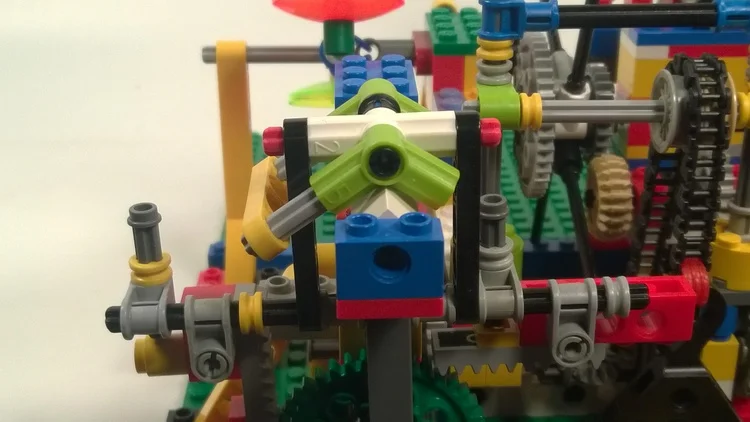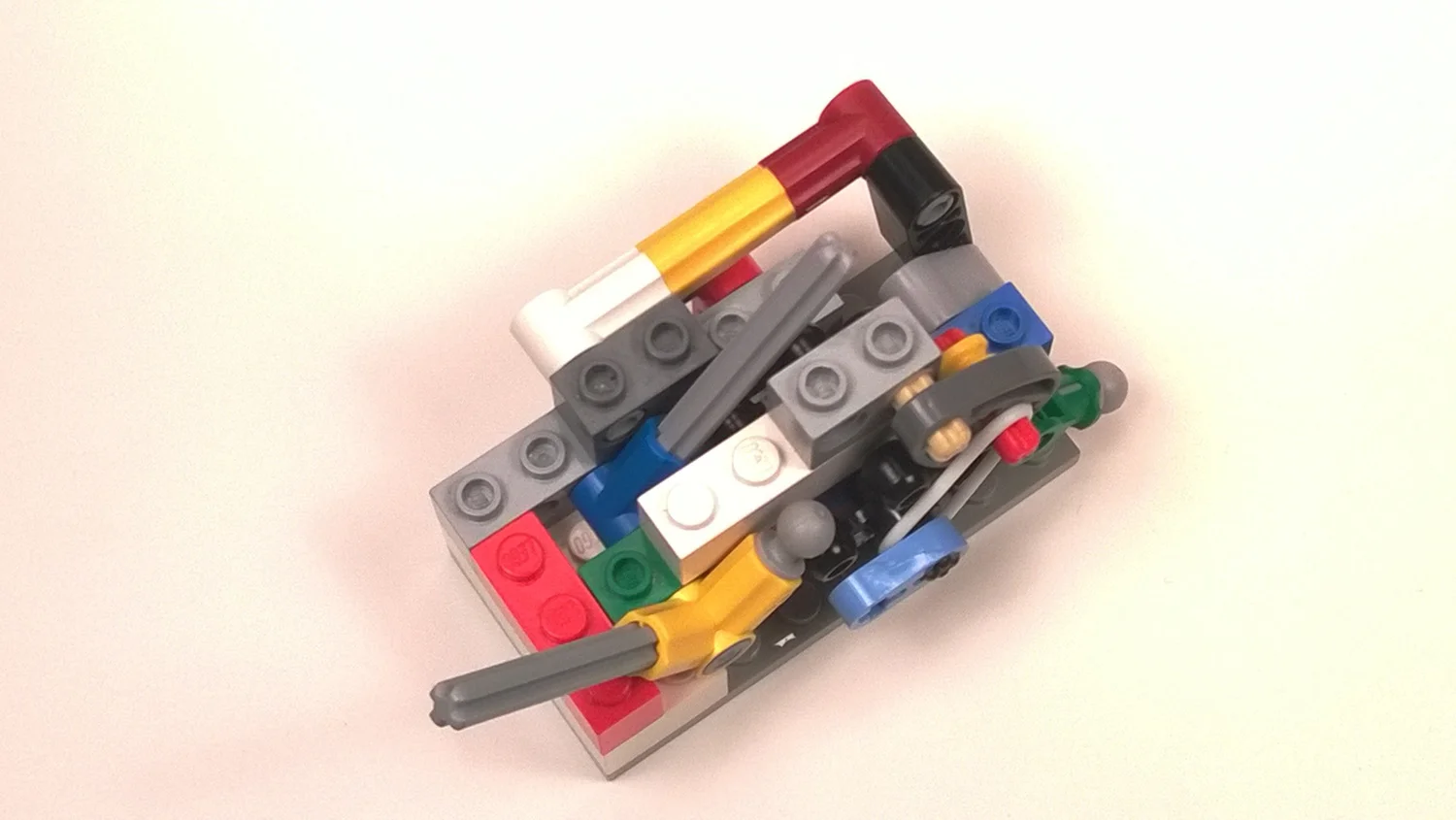Friction Is Your Frenemy
Friction is big challenge in precision machines. The friction problem doesn’t affect most Lego models, since they are powered by hand or by motors and don’t require the precision of a mechanical clock. Clock makers have been plagued with friction problems for centuries and have invented clever ways to reduce friction.
Lego parts are manufactured with tight tolerances, but they are made out of bendable plastic. If wider gears (12, 20, 36 tooth) wobble just a little, they contact the brick walls during rotation, causing rubbing friction. The plastic base plate also deforms under the weight of the pendulum and the power weight. Plastic pieces like axles bend under stress, causing pinching in the standard brick holes. All this friction robs energy and hurts accuracy.
In the middle of the picture above, the black 36 tooth gear and the gray 12 tooth gear are pulled away from the brick wall to prevent rubbing.
In the Lego parts there are no clock jewels or lubrication to reduce the considerable axle rotation friction. And adding more weight to overcome friction simply increases frictional stresses. Friction must be found and reduced.
What does friction look like? In a Lego Astronomical Clock, the friction we're trying to eliminate usually doesn’t look like anything. But friction is revealed by a slight popping sound that can also be felt. In the hunt for friction, I reduce the driving weight until the clock won't run, and then add a little pressure and listen for the sound or feel the vibration. It takes patience, but it works to hunt down friction.
Here are the most common friction problems in the Lego clock:
- Axles not aligned with holes
- Axles that bend from pressure
- Axles that are permanently twisted or scratched (damaged)
- Rotating parts (gears, wheels) rubbing on bricks
- Gears that mesh too tightly
- Chains that are too tight or rubbing
- Differential gears that are too tight
- Pendulum rubbing on escapement gear
- Weight deforming base plate or walls
- Bushings that are too tight against wall
- Grasshopper pallets that rub escapement gear
Details about various solutions (and hundreds of attempts) will be shown in future posts; right now, I just want to highlight one: the friction from the pendulum pivot that can seriously waste energy.
The pendulum has a heavy bob that is constantly swinging and so even a little rubbing consumes a lot of energy. Some of the historical solutions to suspending pendulums involve using spring steel (not Lego and, therefore, not acceptable) or very sharp knife-edge pivots. Lego doesn’t really have a knife-edge but if you’ve ever stepped on a Lego, you know the 90 degree corners are quite sharp (and painful).
All I needed to make a knife-edge pivot was a pivot angle that was at least 90 degrees, plus the maximum angle of a pendulum swing. Making the pendulum pivot out of a 112.5-degree angle connector (Lego #5) and balancing it on a 90-degree brick edge did the trick to reduce that friction. By balancing the pendulum on the sharpest possible corner, there is pivoting, but very little sliding. Friction in the pivot has been conquered!
112.5 degree pendulum pivot resting on the knife-edge pivot.
112.5 degree pendulum pivot lifted off the knife-edge pivot.
When creating your own delicate Lego mechanisms, don't just overpower friction. Instead, take the extra time to uncover the source of friction and make the machine more energy efficient.










